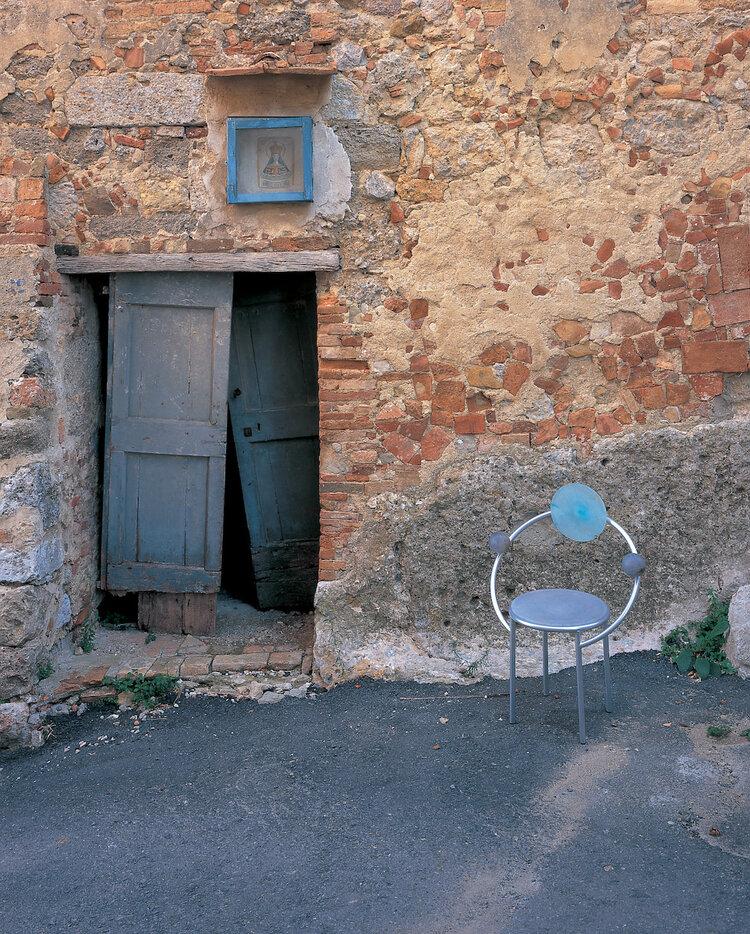“Quest’aspetto dell’utilizzazione attiva dell’opera d’arte e quindi dell’invito dell’artista al visitatore-fruitore-passante di entrare in relazione con il suo sistema estetico, di vivere in esso per un po’ di tempo, viene esteso da Ayse Erkmen che, entrando in diretto confronto con l’architettura sacrale medievale, vi sistema di fronte modelli, anch’essi in pietra e quindi anch’essi monumento, di sedie di famosi designer italiani del dopoguerra, elimina la cesura tra passato e presente.”
— Florian Matzner, tratto dal catalogo Arte All’Arte III, 1998

